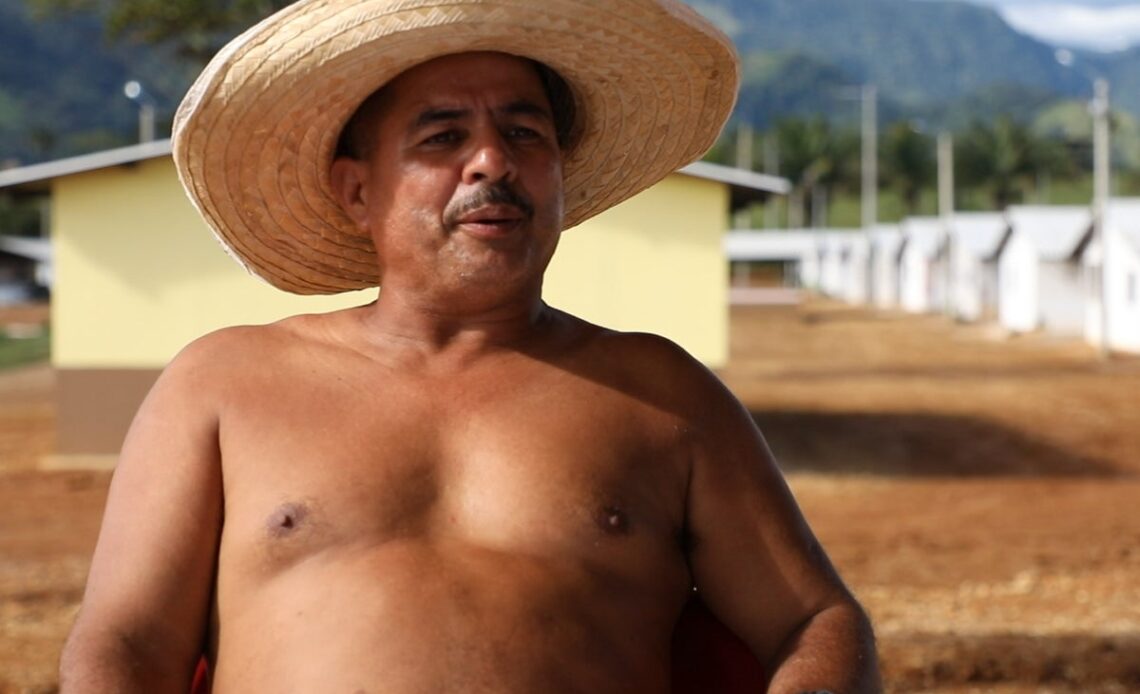The election of Iván Duque four years ago was a threat for us. But we will continue to follow the peace agreement regardless of who is the next president of Colombia. We are more determined than ever to comply with the peace accords, and this is the reason they want to kill us.”
Olmedo Vega spent 35 years as a guerrilla commander during Colombia’s armed conflict – one of the longest the world has ever seen. “The Farc is my family – I grew up with the guerrillas. But now I really want to commit to this new life here in Agua Bonita, along with my old comrades.”
Over the past four years, we have carried out 42 in-depth interviews with former guerrilla soldiers in Agua Bonita and some of the other 25 Territorial Spaces for Training, Reintegration and Reincorporation (ETCR in Spanish), developed by the Colombian government and the UN to resettle thousands of former Farc (Revolutionary Armed Forces of Colombia) fighters after the historic 2016 peace agreement.
We sought to understand the barriers faced by ex-combatants as they try to reintegrate into civil society. The result of the 19 June election has seen President Duque’s reign come to an end, replaced by Gustavo Petro, a former member of the M-19 guerrilla. This change will have major implications for the future of Colombia, the survival of the peace agreement, and the prospects of all those former combatants who have committed to a life without conflict.
After six decades of fighting, it is estimated that almost 20 per cent of the population is a direct victim of Colombia’s civil war – including almost 9 million internally displaced people, 200,000 enforced disappearances, up to 40,000 kidnappings, more than 17,000 child soldiers, nearly 9,321 landmine incidents, and 16,324 acts of sexual violence.
For the almost 13,000 former Farc guerrillas, the end of the conflict initiated a process of “disarmament, demobilisation and reintegration” into Colombian society. But while positive steps were taken on both sides, more than 300 massacres have been recorded since the peace deal was signed on 26 September 2016. Some 316 Farc ex-combatants and 1,287 human rights defenders have been murdered during this period of “peace”, putting the agreement under increasing threat.
Residents of Agua Bonita struggle with poor transport links and a lack of jobs
(Juan Pablo Valderrama. Author provided)
‘A place to have a dignified life’
The Agua Bonita (“Beautiful water”) guerrilla demobilisation…
Click Here to Read the Full Original Article at The Independent Travel…
